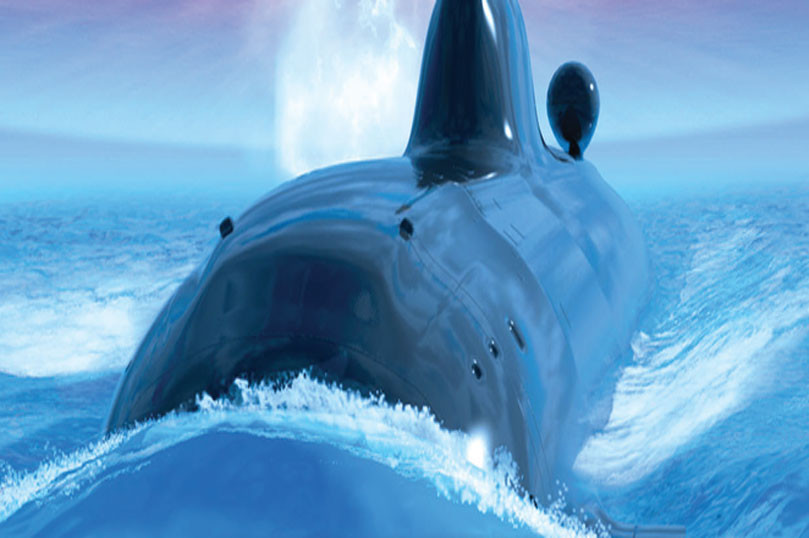The term techno-thriller is synonymous with Tom Clancy, who re-introduced the genre with opens in a new windowThe Hunt For Red October, and then cemented its presence with opens in a new windowRed Storm Rising. Both were more than bestsellers, and since then dozens of other authors have written similar stories; some excellent, others not so much.
Any genre has rules and conventions. Horses and cowboys make it a western. If there are aliens or spaceships, it’s science fiction. If there is a private investigator and a dead body, then it’s a detective story (the bad girl client is optional). If aliens committed the murder, then it’s back to being sci-fi.
The rules for techno-thrillers are:
- A military confrontation or overt conflict.
- An emphasis on the technology or hardware that appears in the story.
- And the unwritten rule: The good guys win.
These were clear in Hunt. Tom was fascinated technology, and it shows in his descriptions of the nuclear submarines, their weapons, and sensors used in the story. They’re flashy, and because people were not familiar with how they worked, Tom properly explained what they could do, and also what they couldn’t do. It’s important that readers understand a hero’s limitations. Tom had a lot of fun describing them, and that came though in his writing.
Others that have followed Tom in the genre have made technology more than just tools for the characters to use. They’ll include lengthy descriptions of the gear, or when it is used, provide detailed narratives of the electrical firing impulse as it moves from the weapons console to the circuits in the missile. One example that has stuck with me was a character firing a rifle in a battle: “… the 65 grain steel-jacketed bullet, moving at 3100 feet per second …”
I didn’t read much after that, because none of that had anything to do with the story and whether or not the hero hit the guy he was aiming for. Maybe in a movie they could cut in a slow-motion shot of the bullet leaving the rifle, highlighting its energy. In a book, that didn’t work.
Unless they’re important to the plot, I avoid numbers whenever I can. Numbers slow a reader down. If they’re paying attention, they have to pause for just a moment to grasp its importance. Too many numbers, and they stop trying. It may be important that a torpedo moves at forty knots and the hero’s ship only does thirty five, but I might just have a crewman report “It’s too fast, sir, we can’t outrun it.”
Sometime you need explanations. In opens in a new windowExit Plan, our characters used a Cormorant Unmanned Aerial Vehicle (UAV). This was a real-world design for a UAV that could be launched from a submerged submarine. It would take off from the water and drop supplies to friendly troops ashore and also provide aerial fire support. It looked cool, too.
But explanations and descriptions slow the pace of a story. There are several things a writer can do to fix this. The first trick is to break up a long explanation into many short ones, spaced out and in different forms. Another is to build it into the story. The bad guys don’t understand what just happened to them, and then later on they figure it out, and in the process explain it to the reader.
Another trick is to have a new guy around. He doesn’t know how the gear works, so his comrades have to teach him. Remember Seaman Beaumont in Hunt? Jonesy was always explaining things to Beaumont, which is how the reader found out what the sonarman was up to.
The technology in a techno-thriller is there for the same reason there are horses in westerns. They are tools that let the characters do their job. Like westerns, unless it’s a very special horse, the story should be about the rider, not his mount.
As much as Tom loved technology, his strength and focus was always on the characters. His crewmen in Hunt were fashioned after the former nuclear submariners that worked at the Calvert Cliffs nuclear power plant. They’d come into his insurance office nearby, and after finishing their business, they’d start telling sea stories. Tom listened.
The Hunt for Red October would have disappeared after its first print run (5,000 copies) if it had lacked strong characters or a good story. That’s why I avoid describing my books as techno-thrillers. I like the term “military thriller.” That gets rid of rule number two. Rule number three never changes.
Some books don’t need a lot of technology. opens in a new windowDangerous Ground, the first Jerry Mitchell story, used the “new guy” angle to introduce readers to nuclear submarines (again), but this time focusing on the culture and mindset of the submarine community. One thing we wanted to show was how submariners, who lived and worked inside a giant machine, related to it.
The most prominent hardware in the book was the Unmanned Underwater Vehicles (UUVs) used by Jerry and his comrades, and we’ve included unmanned systems in every Jerry Mitchell book since then.
opens in a new windowCold Choices, the second book, was about two submarines that had collided, crippling the Russian boat, and the race to save the crewmen trapped inside. There, the UUV technology served that purpose, but the main story was about the U.S. and Russia working together to save them.
In Exit Plan, number three, the aforementioned Cormorant UAV was about the only technology that was highlighted. The rest of the hardware used by our heroes was commonplace, although outside Jerry’s own experience.
opens in a new windowShattered Trident is really a conventional war story, filled with submarines, cruise missiles, and warships, in addition to UUVs and UAVs, but the focus is on the reasons for the conflict, and our heroes’ search for a way to stop it before it goes too far. The hardware they use needs little explanation for the reader to understand their actions.
The latest Jerry Mitchell story, opens in a new windowFatal Thunder, highlights nuclear forensics early in the book. The U.S. uses it to establish the source of a nuclear weapon detonated in Kashmir, but that gets left behind quickly as the heroes try to solve a conspiracy’s plan before it can be executed.
Another reason I use “military thriller” is that the genre is changing, or more properly reacting to a changing readership’s sensibilities. Back when Hunt and Red Storm Rising were published, the U.S. was in the final stages of a very Cold War. Shots fired in anger were rare. A large part of their appeal was the “what if?” factor. After nearly two and half decades of near constant war, the technology has become commonplace. If the technology has lost its appeal, then what’s left is plot and characters.
Five years after Red Storm, Desert Storm showed us videos of laser-guided bombs every night. The War on Terror removed any remaining air of novelty, rendering laser-guided bombs and black-clad special warfare troops familiar, a routine part of the evening news.
Advice for new authors: Technology is shiny and fun, but don’t become dazzled by its siren song. Use it when you need to, but every time you’re tempted to write a stream of techno-babble, imagine your reader trying to understand the instructions for their DVD player.
Buy Fatal Thunder today:
opens in a new window opens in a new window
opens in a new window opens in a new window
opens in a new window opens in a new window
opens in a new window opens in a new window
opens in a new window opens in a new window
opens in a new window









